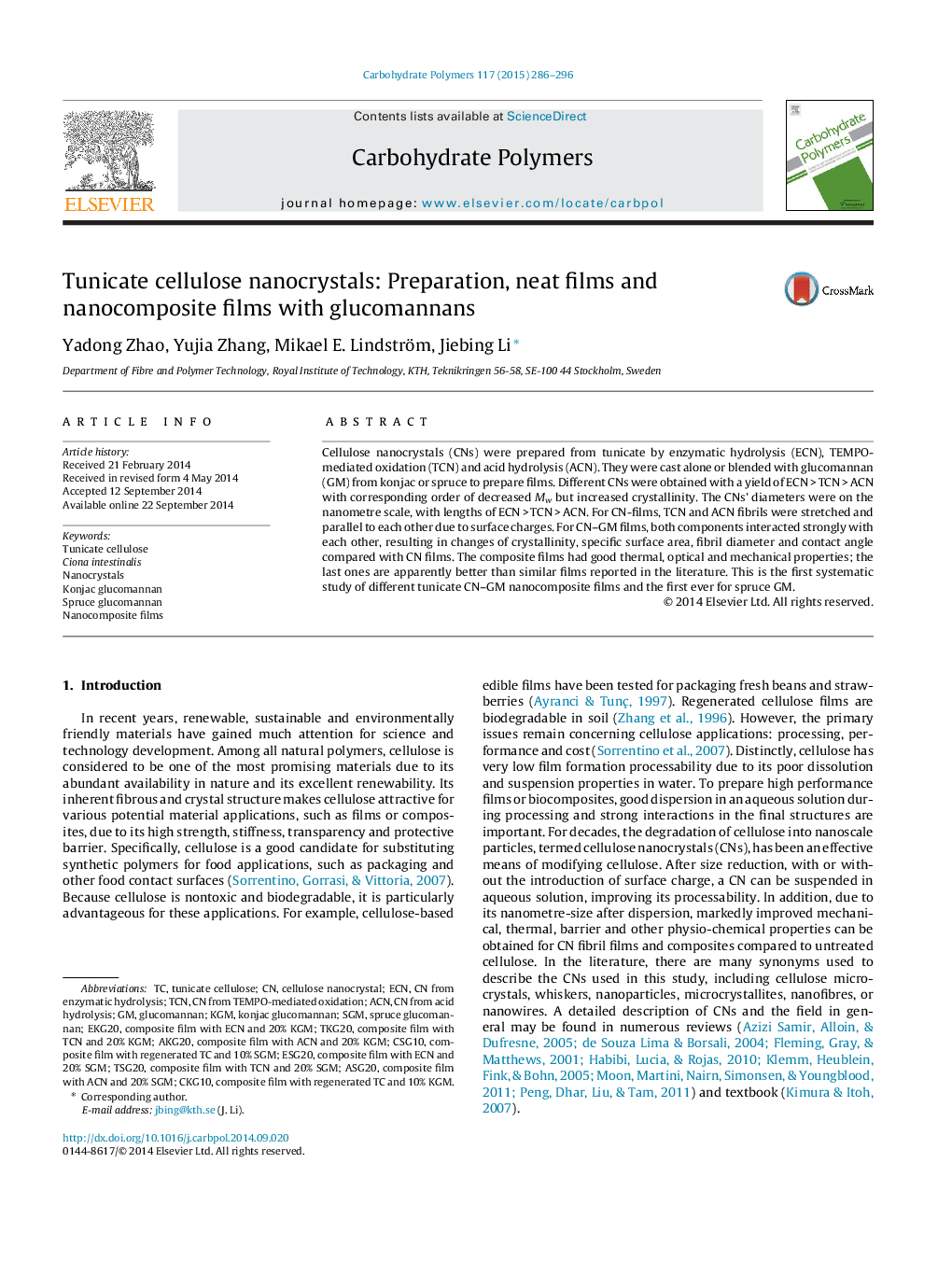| Article ID | Journal | Published Year | Pages | File Type |
|---|---|---|---|---|
| 7789629 | Carbohydrate Polymers | 2015 | 11 Pages |
Abstract
Cellulose nanocrystals (CNs) were prepared from tunicate by enzymatic hydrolysis (ECN), TEMPO-mediated oxidation (TCN) and acid hydrolysis (ACN). They were cast alone or blended with glucomannan (GM) from konjac or spruce to prepare films. Different CNs were obtained with a yield of ECNÂ >Â TCNÂ >Â ACN with corresponding order of decreased Mw but increased crystallinity. The CNs' diameters were on the nanometre scale, with lengths of ECNÂ >Â TCNÂ >Â ACN. For CN-films, TCN and ACN fibrils were stretched and parallel to each other due to surface charges. For CN-GM films, both components interacted strongly with each other, resulting in changes of crystallinity, specific surface area, fibril diameter and contact angle compared with CN films. The composite films had good thermal, optical and mechanical properties; the last ones are apparently better than similar films reported in the literature. This is the first systematic study of different tunicate CN-GM nanocomposite films and the first ever for spruce GM.
Keywords
Related Topics
Physical Sciences and Engineering
Chemistry
Organic Chemistry
Authors
Yadong Zhao, Yujia Zhang, Mikael E. Lindström, Jiebing Li,
